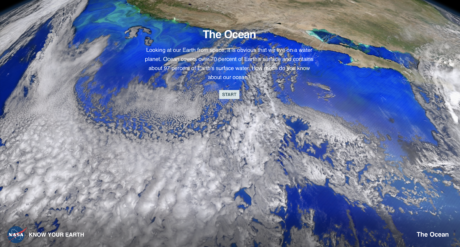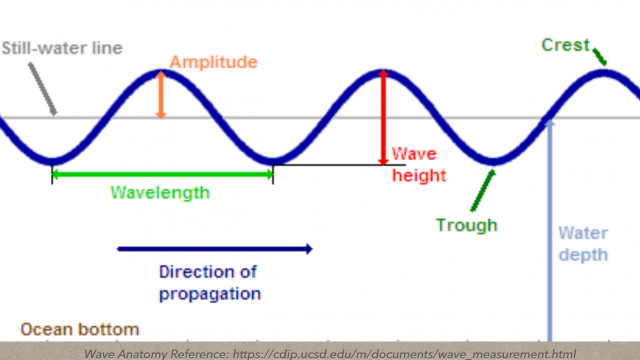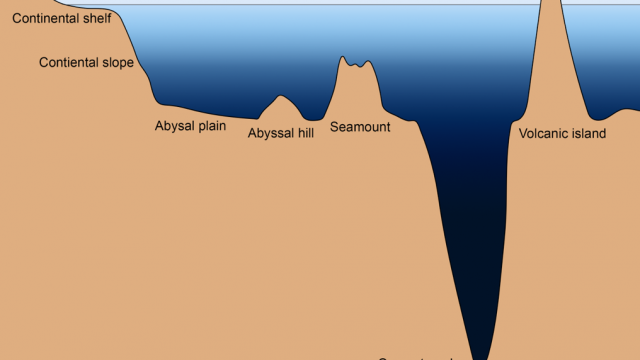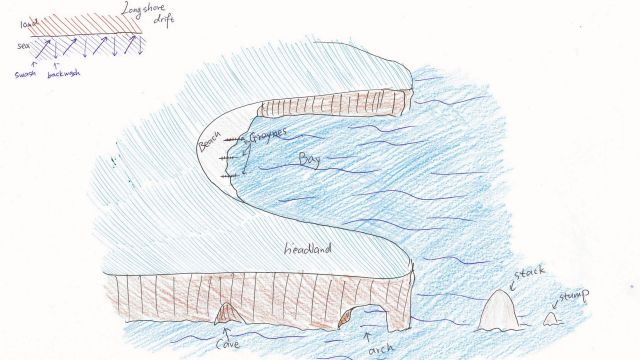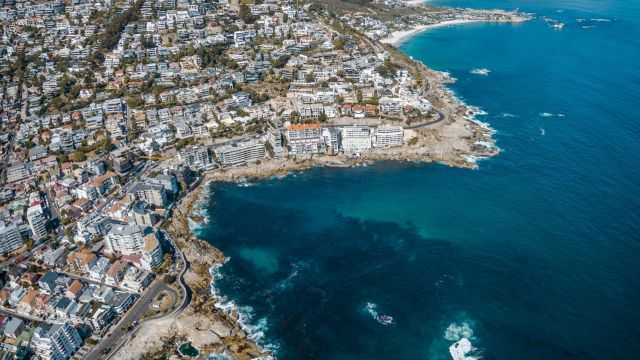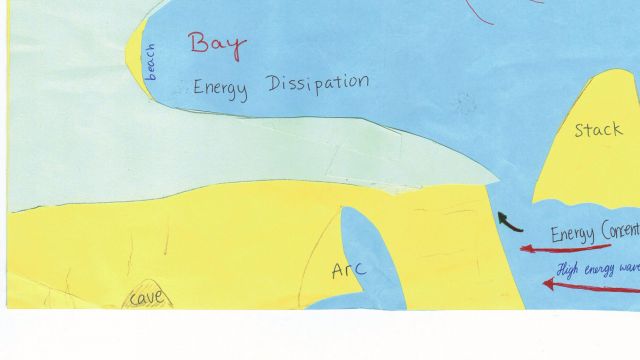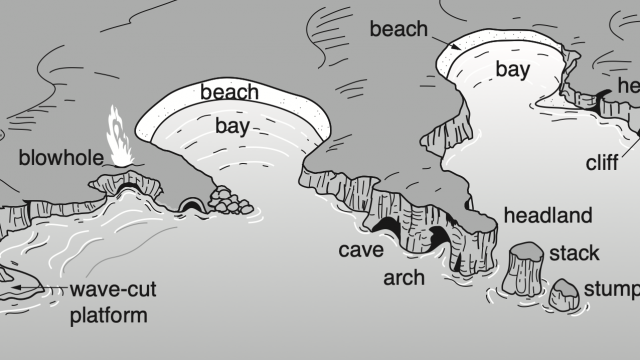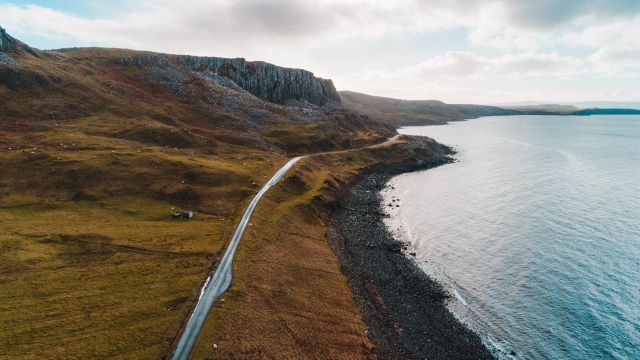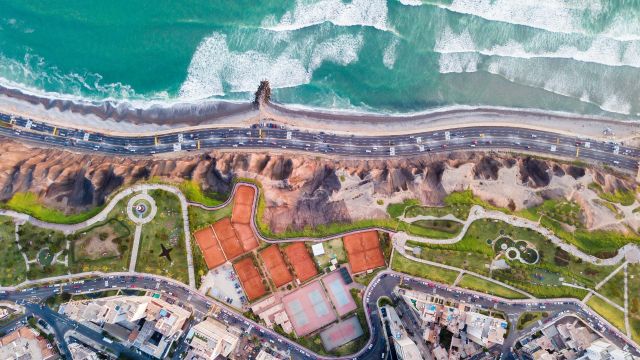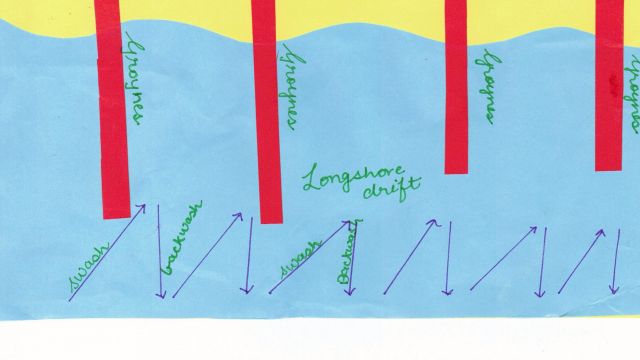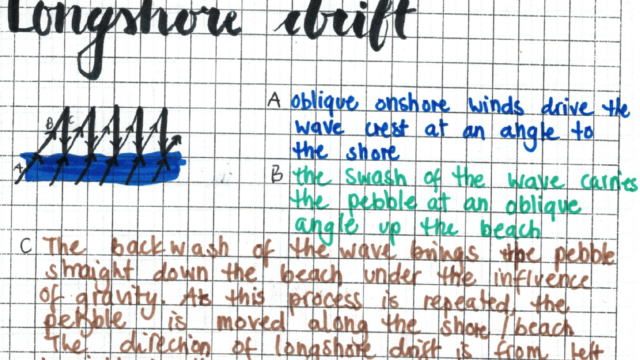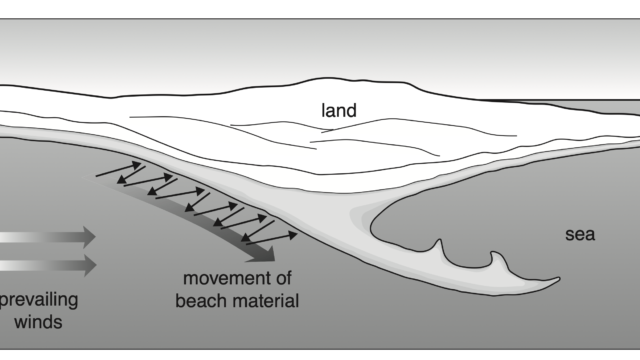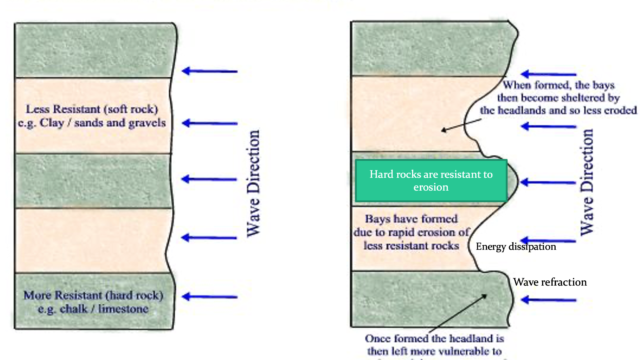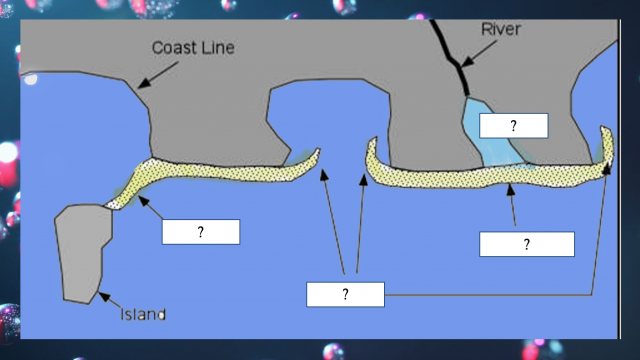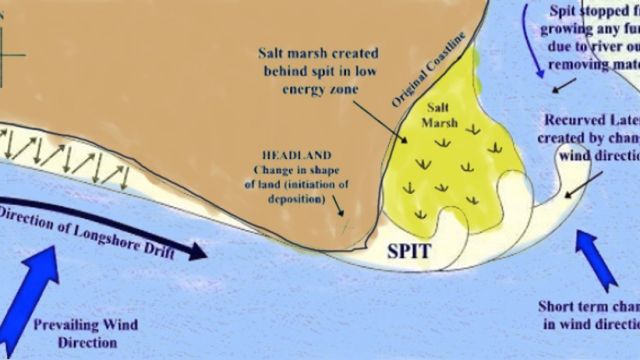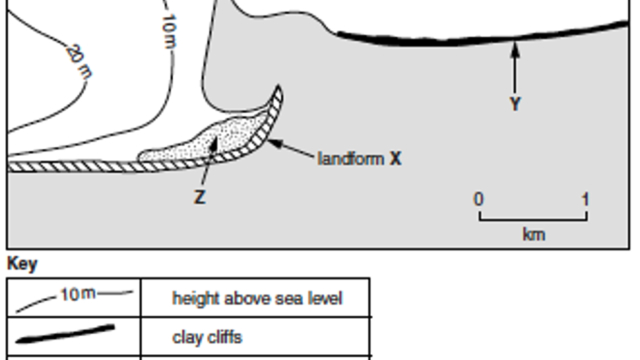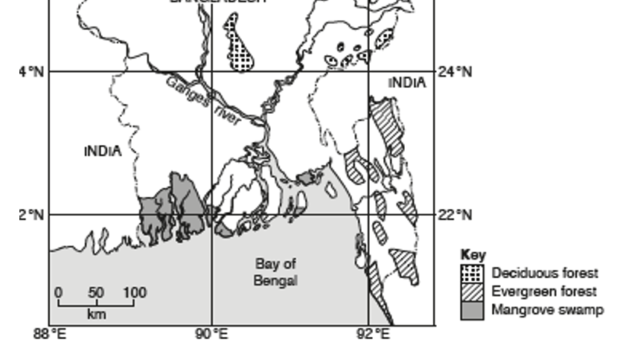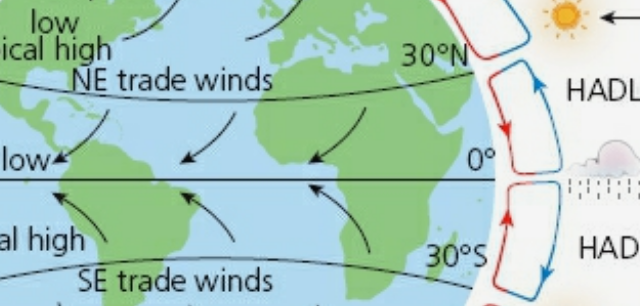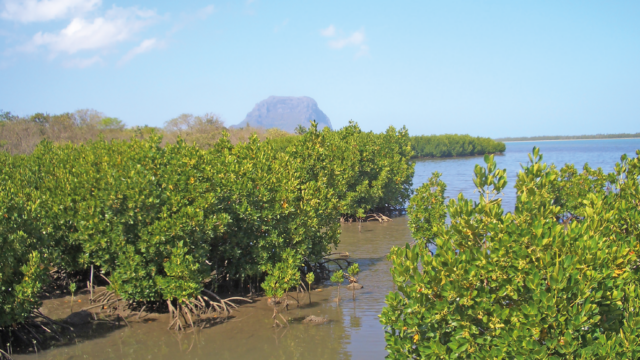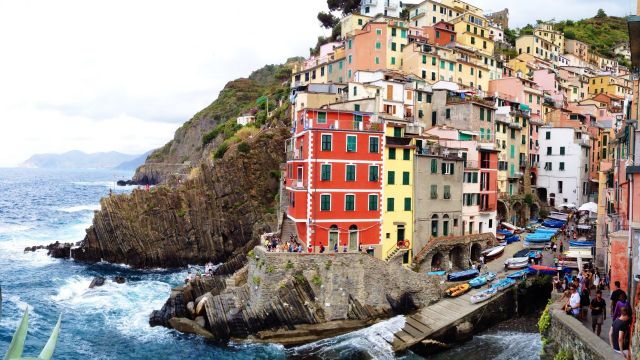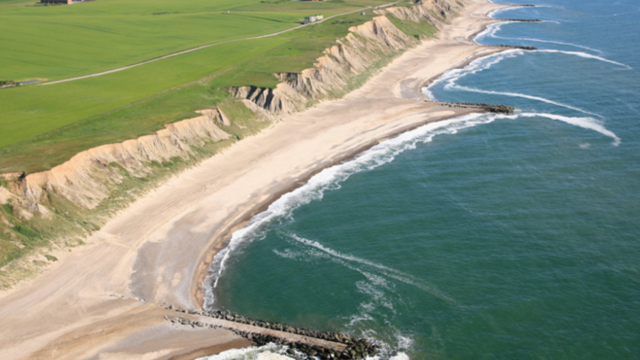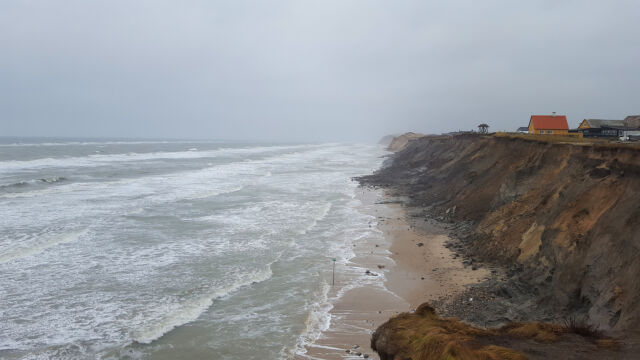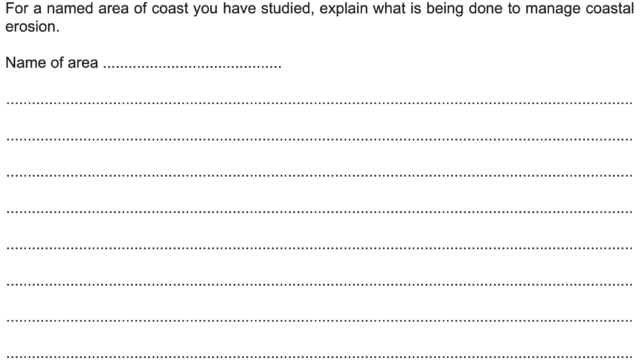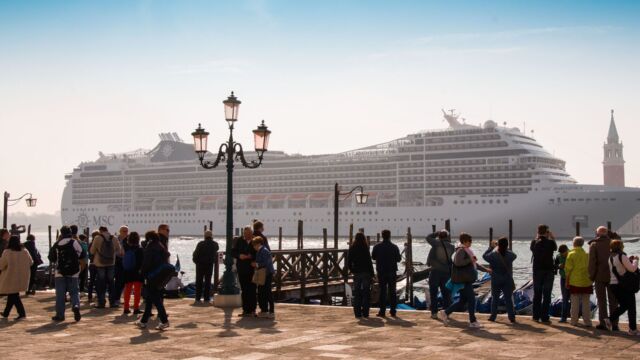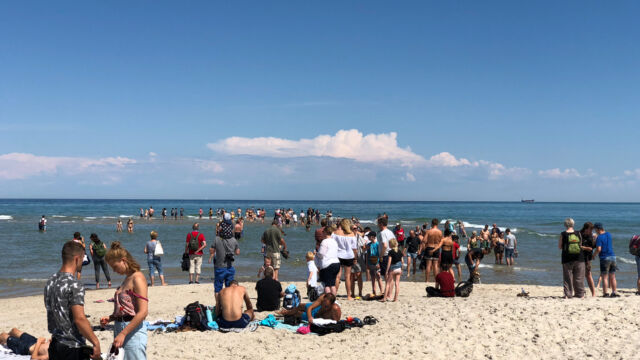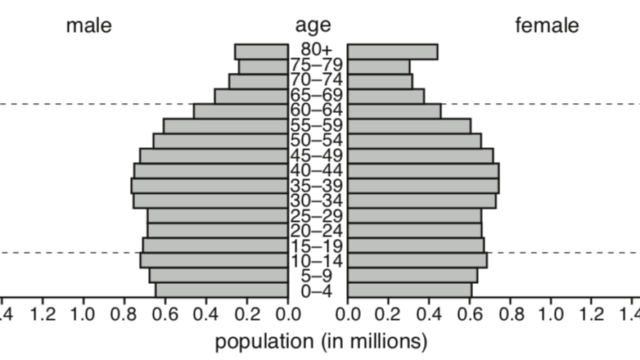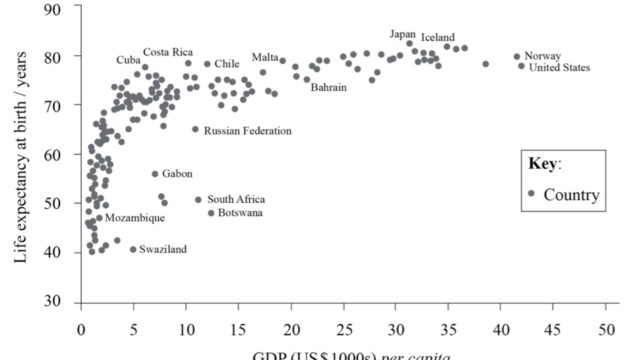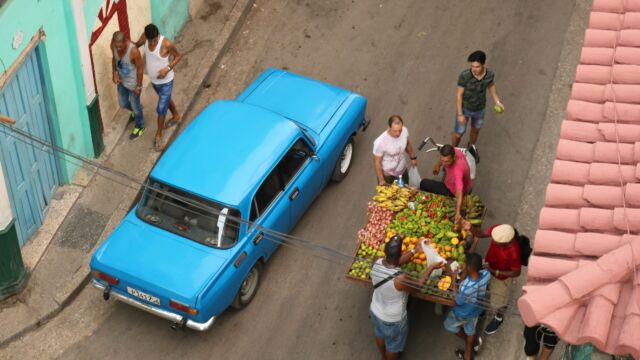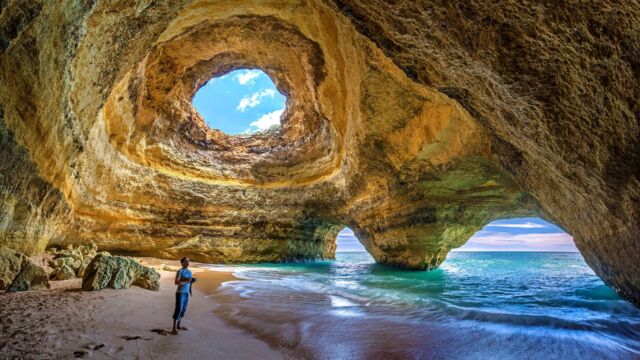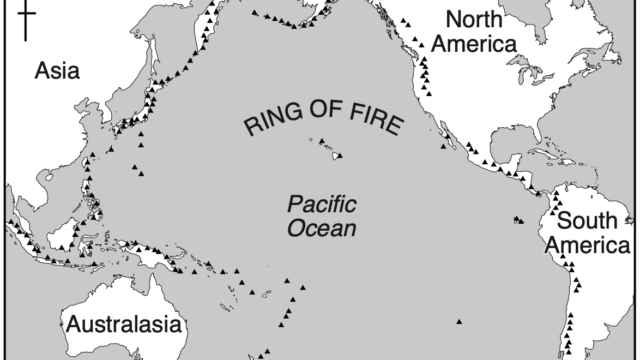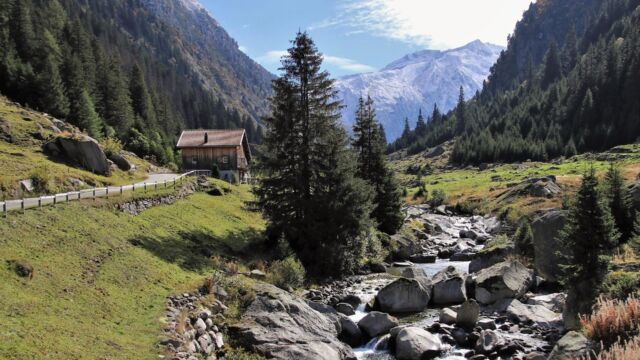Important Terminologies related to topic 2.3 and Wave anatomy:
| Wave length | is the distance between two successive crest or trough |
| Wave frequency | is the number of waves per minute |
| Still-Water Line | The level of the sea surface where it is expected to be calm. |
| Crest | The highest point on the wave above the still-water line. |
| Trough | The lowest point on the wave below the still-water line. |
| Wave height | is the vertical distance between the trough and the crest. |
| Wavelength | The horizontal distance between successive crests or troughs. |
| Amplitude | One-half the wave height or the distance from either the crest or the trough to the still-water line. |
| Fetch | is the amount of open water over which a wave has passed |
| Velocity | is the speed at which wave travels |
| Swash | the movement of water up the beach is swash |
| Backwash | the movement of water down the beach under the force of gravity. |
Destructive and Constructive Waves
| Destructive waves | Constructive waves |
|---|---|
| Erosional -high energy waves- also called surf, storm and plunging wave | Depositional- low energy waves, also called swell or surge |
| Short wave lenght, high height (more than one meter) | Long wave length and low height |
| High frequency (10-13 per minute) | Low frequency |
| Circular orbit, high gradient | Elliptical orbit, low gradient |
| Strong backwash | Strong swash |
| Caused by local wind or storm | Caused by swell ( high waves in the open water capable of travelling long distances ) |
Marine Erosional Processes
| Hydraulic Action | Occurs due to the force of air and water acting in joints and cracks. It occurs as the waves breaks onto cliffs, any air trapped in cracks of the cliff will be under great pressure. As the waves retreats, the pressure is released with explosive force and the rocks will weaken and will be shattered by the storm waves. |
| Corrasion or Abrasion | Whereby a breaking waves hurls pebbles and shingles against a coast and erodes it. |
| Attrition | Wearing away of the load itself. Gradual reduction in the size of the loads as it crashes with other particles. |
| Solution or Corrosion | Chemical erosion in chalk and limestone rocks where acidic water dissolve rock. |
Refer to: http://www.geographyalltheway.com/in/gcse-coasts/wave_processes.htm
Marine Transportation Processes
| Traction | Large boulders and pebbles are carried along the sea bed |
| Saltation | Small pebbles and stones are bounced or roll along the bed |
| Suspension | Fine light materials are suspended in the sea water |
| Solution | Fine light materials are dissolved in the sea water, involves chemical change |
Coastal Vegetation in Salt Marshes and Sand Dunes
| Type | Characteristics | Adaptation mechanism |
|---|---|---|
| Halophytes (salt tolerant) | Have a number of ways to cope with the daily changes in the levels of salinity, submergence by water and rapidly shifting sediments. Able to tolerate the waterlogged situation two times a day during high tides. | Deep root to anchor the plant in the mud. Ability to extract nitrogen directly from the air. Example: Mangrove vegetation in tropics and sub tropics. |
| Xerophyte (drought resistant) | Condition on the foreshore is harsh, saline, windy and arid, due to the presence of the permeable sand. | Two most common species: Sea couch and Marram grass Sea couch store water in its succulent leaves Marram has deep tap roots |
Mangrove
Mangrove swamps are the areas of vegetation found along sheltered tropical coastlines and estuaries between 32 °N and 38 °S where there is a large area between high and low watermark. They are made up of different species of evergreen mangrove trees and other plants. Mangroves need to live in salty water as they are halophytes. They only grow in areas where the temperature remains above 20 °C and the seasonal temperature range should not exceed 5 °C. The areas where they grow should be calm with no strong waves or tidal currents. Mangrove trees are able to withstand being covered twice a day by saltwater. They have specially adapted aerial and salt filtering roots and salt excreting leaves that enable them to occupy the wetlands where other plants cannot survive. They prop the tree up with their prop roots and take in oxygen at low tide with their aerial roots. Mangroves are the home to a diverse number of species including fish, birds, frogs, snakes, insects and crocodiles. Mammals also live in these areas, ranging from small animals like swamp rats and monkeys to large carnivores like tigers. (Mangroves protect coastlines from erosion by acting as a natural barrier and flood defence).
Characteristics of the Mangrove Vegetation
Salt tolerant-evergreen- halophytes
Grow only in areas with temperature more than 20 degree C
Seasonal temperature range should not exceed 5 degree C
Mangrove needs calm water and can not grow in areas of strong tidal currents
Ideal location are tropical salt marshes and sheltered bays
Develop Aerial and Prop roots to support growth in muddy-tidal water and to take oxygen directly from the air at low tide.
Have unique ecosystem with diverse number of species
Coastal Management
| Hard Engineering* | Soft Engineering* |
| Building artificial structures such as sea wall, Groynes, rock armor aimed at controlling natural processes Trying to win over the forces of nature Immediate solution to protect high value properties Very costly and may have adverse environmental impact | A suitable approach to manage the coast without using artificial structure. For example, beach nourishment Try to fit in and work with the natural processes Often low maintenance cost – both economically and environmentally Managed retreat or coastal realignment: Allowing controlled flooding of low lying coastal areas where the value of land is low |
| Forms/ways of coastal management | Methods | Evaluation: Advantages | Evaluation: Weaknesses | |
|---|---|---|---|---|
| Hard Engineering structures | ||||
| Sea wall | Massive concrete curved walls or rock barrier built at the base of the cliff to dissipate the wave energy and to reflect back the waves into the sea. | Easily constructed, effective in areas with high population density. Can be used as a walkway or promenade. | Not long lasting, average life span of 35 years, expensive maintenance. It may look unnatural. | 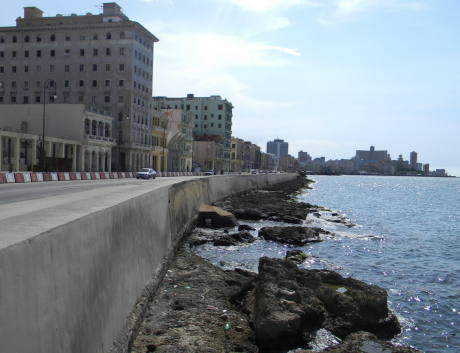 |
| Gabions | Gabions are made to absorb wave energy. Gabions are low-cost hard coastal engineering structures to combat coastal erosion. They consist of individual wire cages or baskets filled with rocks, stacked on top of one another to achieve shore-stabilization. | Low cost structure commonly used in poor regions of Puerto Rico. Used in open ocean or high-energy coastal environments | These are small scale structures with limited life span. It may show gradual failure by continuous degradation or instantaneous failure during a storm surge. Rock leakage onto the beach is also very common. | 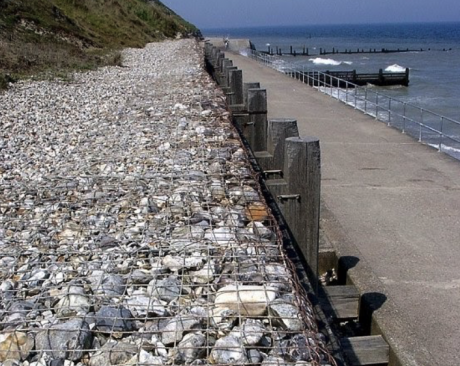 |
| Revetments | Sloping embankment structures made up of concrete, stone, asphalt or wood built along the base of cliffs or in front of sea walls to absorb and dissipate wave energy to reduce coastal erosion. | These are immediately effective, temporary measure to protect against coastal flooding. | Costly and only last for a relatively short period of time. | Refer: https://newground.co.uk/wp-content/uploads/2018/11/Coastal-Revetments.pdf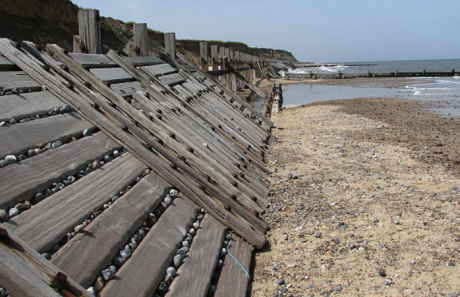 |
| Rock armors (Rip Rap) | Large boulders interlocked and piled up together to form rock revetments or a kind of sea wall. Huge boulders of granite and basalt of more than 10 tonnes are piled up on top of each other leaving gaps between them allowing water to pass through. | Porous structure allows biotic community to thrive but effectively reduces the erosional power of waves. Rock armour is often used to protect Groynes. Relatively cheap and easy to maintain. | Rocks are usually imported from other areas and may not fit with the local geology. May look obtrusive. | 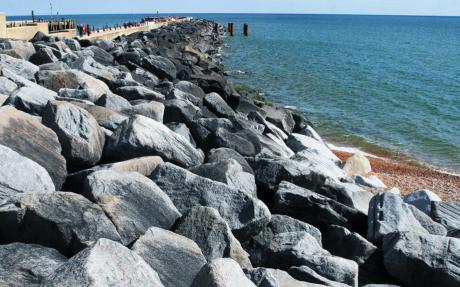 |
| Groynes | Timber and rock structures built perpendicular to the shoreline of the coast to reduce longshore drift and trap sediments. Wooden groynes, steel groynes, rubble-mound and sand-filled bag groynes are common. | Results bigger beaches. Groynes can also be used in estuaries to decrease tidal flow velocities | Can negatively affect the transportation and sedimentation pattern of the area, causing down-drift erosion. | 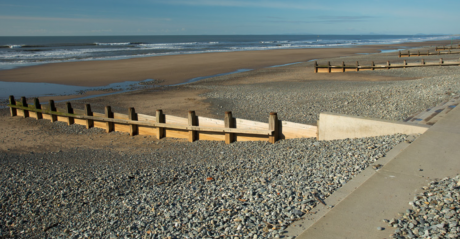 |
| Soft Engineering | ||||
| Beach nourishment or beach filling | Adding large quantities of sand or sediment to beaches to combat erosion and increase beach width. Sand also pumped from the seabed. | Looks natural. | Expensive short term solution. Can not be used in high energy beaches. The water offshore can become muddy and sudden inputs of huge amount of sands affect beach animals. | 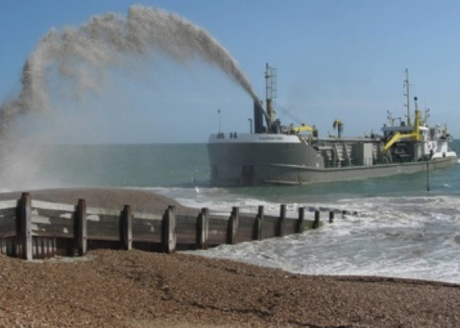 |
| Marsh creation and managed retreat | Involves low-lying coastal areas to be flooded to become salt marshes. | Low cost land can be protected by this natural process. | Land and coastal property will be lost. People may need to migrate. | 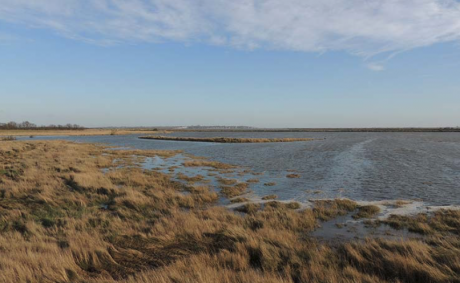 |
| Dune regeneration | Coastal dunes are effective buffers to sea. Marram grass is planted to stabilize dunes. | Relatively cheap and natural. | Can be easily damaged by storms and needs time to be effective. | 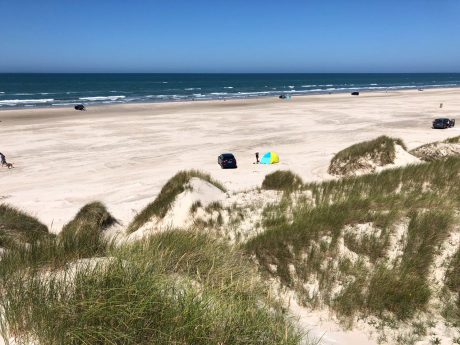 |


